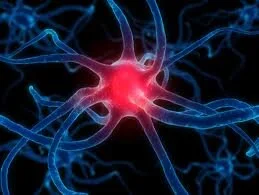Study Identifies a New Way Brain Cells Die in Alzheimer’s Disease
by Health Canal:Will help lead researchers towards new treatments.A new study challenges conventional thinking about how brain cells die in Alzheimer’s disease. The findings demonstrate a previously unknown mechanism by which the cells die and will help lead researchers in new directions for treating the degenerative brain disease. The study by scientists at the University of Calgary’s Hotchkiss Brain Institute is published this week in the prestigious journal Proceedings of the National Academy of Sciences (PNAS).At the cellular level, our brains require a delicate balance of chemicals and molecules in order to function properly. The cells ‘talk to each other’ using chemicals called neurotransmitters, whichactivate specialized receptors. But as this study by Gerald Zamponi, PhD, and Dr. Peter Stys shows, the cells of Alzheimer’s patients are dying because the key receptor responsible for memory and learning, called the NMDA receptor, is malfunctioning.It has previously been shown that Alzheimer’s patients have a malformed protein called Ab42 present in their brains. With this research, Stys, Professor in the Department of Clinical Neurosciences and Zamponi, Head of the Department of Physiology and Pharmacology, show inanimal models a completely new mechanism of how this protein kills brain cells.They found that the NMDA receptor is strongly regulated by copper. If copper is prevented from regulating this key receptor, such as in Alzheimer’s disease, brain cells become over stimulated; with time they become sick and ultimately die.“We cannot underestimate the importance of copper for proper brain cell functioning,” says Zamponi, “For example, there are several diseases where copper levels are altered, and this leads to the same NMDA receptor deficiency and neurodegeneration."When the Ab42 steals the copper away from the NMDA receptor, the receptor gets over-activated, which kills the brain cell. “This particular mechanism was previously unknown and could have fundamentally important therapeutic implications,” says Zamponi.Co-senior author Stys adds, “Ultimately we are seeing an underlying deficiency in copper, but at a subcellular level. Unfortunately because of the way that the body regulates copper, we can’t simply eat more of a certain kind of food or take a copper supplement to compensate. What we are looking at now is the development of a drug that acts on the NMDA receptor to mimic the effect of copper in the brain, therefore restoring normal NMDA receptor function and protecting brain cells.”Alzheimer’s disease destroys brain cells and results in memory loss, changes in mood and behavior and difficulty with day-to-day tasks. Most commonly diagnosed in adults over the age of 65, more than 100,000 new cases of this progressive and eventually fatal disease are diagnosed each year.Bill Gaudette, CEO, Alzheimer Society of Alberta & Northwest Territories, noted, “Our Society, and the people we work with, welcome the research being conducted by Drs. Zamponi and Stys at the Hotchkiss Brain Institute. The promising therapeutic implications of this work could potentially be a ‘game changer’ for everyone involved with dementia research and care.”This research was supported by PrioNet, the Canadian Institutes of Health Research (CIHR) and theAlberta Prion Research Institute (APRI)/Alberta Innovates-Bio Solutions. Gerald Zamponi and Peter Stys are Alberta Innovates-Health Solutions (AIHS) funded researchers and both hold Canada Research Chairs. Gerald Zamponi is a Fellow of the Royal Society of Canada and Peter Stys is a Fellow of The Royal College of Physicians of Canada.Source: Health Canal (no longer available online)

